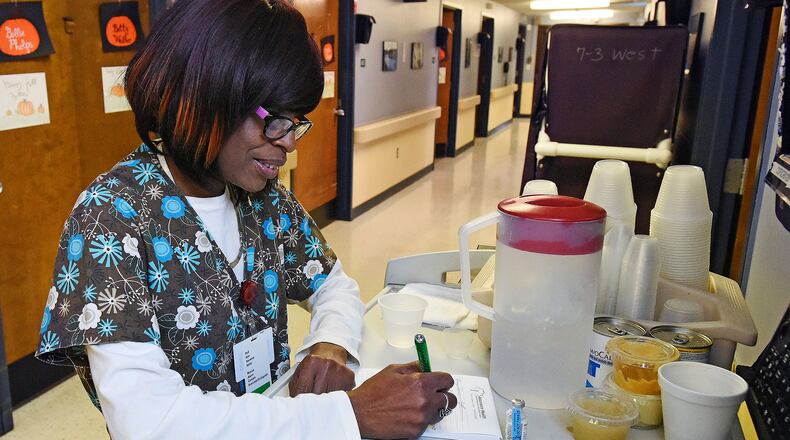Commissioner T.C. Rogers said commissioners can’t allow the status quo to continue.
“We have to have a discussion about what our role is with that segment of the population. We need to actually define what that responsibility is and what’s the amount we can pay. Most of the counties across the state don’t even have a county home,” Rogers said. “The responsibility, just like any service we provide — at what cost. There has to be an ultimate figure that you can’t do that anymore.”
The 109-bed facility is one of 31 county-run nursing homes left in Ohio. The nursing homes were mandated in all 88 counties when the first facility was built in 1830 to serve the infirm, poor and homeless. Many of the facilities closed after the state legislature lifted the mandate and counties opted to let the private sector handle nursing care as government budgets shrank.
But Butler County has maintained its county-run nursing home despite its financial challenges in recent years. The care facility has had to borrow $1.1 million from the County Commission since 2013 to fill budget gaps, largely because of the shifting rules and funding levels of Medicaid reimbursement.
Care Facility Administrator Chuck Demidovich has been able to repay about $600,000 of the original loan, but any future payments are iffy, he said.
Demidovich said the revenue stream’s downward spiral started in 2011 when Gov. John Kasich’s budget erased $20.06 per patient per day from the Butler County Care Facility’s Medicaid rate, bringing it down to $173.43 for care that costs about $207 per patient per day.
The government has continued to tinker with Medicaid rates, and Demidovich said it now sits at $175 per day for the 89 patients who use that method of payment. He only has two patients who have Medicare. Under that plan, the daily rate ranges from $400 to $600. Predictions have been if the home remains status quo the ending cash balance will sink to negative $2 million, with revenues $1 million below expenses by 2020.
“I’m almost there now,” Demidovich told the Journal-News.
The commissioners hired — for almost $25,000 — business consulting firm Plante Moran earlier this year to study the nursing home and make recommendations so the home can be solvent and self-sustaining. The full report arrived in September and County Administrator Charlie Young has been meeting with the commissioners individually.
Chris Joos, a partner at the consulting firm, gave the county several “scenarios” that included a “do nothing” option.
He said the county could raise taxes, lease the facility to a third party to run, continue to outsource billing and accounting functions, downsize to 99 beds and spend $500,000 making renovations to the facility so it is more competitive with private providers. Under this plan “the BCCF would be able to reach a healthy cash balance of $1 million by 2019,” Joos wrote.
The commissioners have said that a tax levy is not an option.
Commissioner Don Dixon said he envisions a hybrid solution of sorts. He said the $500,000 Joos mentioned for facility renovations won’t be nearly enough to make the home competitive in the marketplace. He said they need to hire more consultants — Plante Moran will be involved — to help them figure out a new niche, like wound care for example.
Right now the home's niche is that they will take all the poor and difficult patients that private nursing homes often won't take.
Dixon said that because the money troubles are not affecting patient care, there isn’t a sense of urgency to quickly decide what to do, but they do need to make it a priority for next year.
“I’d say the county home is right up at the top of issues that have to be dealt with,” Dixon said.
Commissioner Cindy Carpenter agreed.
“It’s got to be put on the front burner,” she said.
Young said they have already implemented many of the suggestions in the study. For example, the commissioners on Monday approved closing its adult day care program. Demidovich said the home subsidized the program and it was losing about $70,000 a year, money that will no longer be on the negative side of the balance sheet.
The county administrator said they will likely convene the commissioners for a work session in January to brief them on study provisions they have already been implemented and get discussions going on the next steps for the nursing home.
“We need to come back and say these are the things we have done, this is the impact that they have had,” Young said. “There are some recommendations that we have and these are the challenges and opportunities we face and then figure out where we go from there.”
About the Author
